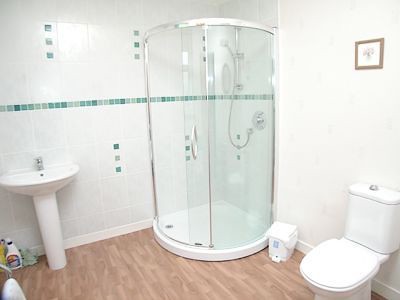Falkland
Visitors guide to Falkland, in the centre of Fife, a town that's frequented by tourists in large numbers in the summer and includes information on sights, accommodation and activities like walks around the place.
ucked away at the foot of the Lomond Hills, off the A912, the ancient and beautiful village of Falkland is the most royal of Fife's Royal Burghs and holds a unique place in Scottish history, as it is the site of Falkland Palace, the favourite residence of the Stuart monarchs. More than three centuries have passed since the last of the kings left Falkland, but it still retains a delightful charm, thanks to the NTS Little Houses Improvement scheme.
Deep rooted in history and culture, Falkland is recognised as the first conservation village in Scotland. Architecturally the burgh is of great interest with many houses being over 300 years old. Some of the landmarks of this village include the Old Town House, Moncreif House and the Parish Church among others.
Falkland is a haven for spectacular wildlife including cliff-top colonies of nesting black-browed albatross, elephant seal harems, penguins etc. The beautiful settings of Falkland make it one of the most popular destinations for photography.
Region
FifeLocal Sights & Activities for Falkland
Falkland Palace
The great Royal Palace stands in the heart of the village, which is a surprise in itself as it shows a remarkable lack of class distinction; rare in medieval Scotland. But it is not only the location of the palace that is exceptional. It is one of the grandest buildings in the country and its variety of styles is part of its charm. Facing the street, the south front is a splendid example of Scottish Gothic with its buttresses, niches and statues of Christ and the saints. The magnificent courtyard frontage in the classical style, with pillars and medallions, strikes an altogether different mood and an air of gracious living. Scotland has few surviving buildings that were in the mainstream of Renaissance architecture, but this one is by far the best.
Though the building shows a strong French influence, there is a flavour about it that is unmistakably Scottish. Most of the existing palace was built in the early 16th century by James IV and his son James V. It was designed as a hunting lodge and was much loved by the Stuart kings and queens who came here to hunt deer and wild boar in the surrounding forests. There was also royal (or real) tennis to ease the strains of government. The royal tennis court, built in 1539 and the oldest in Britain, is still in use Falkland Palace Real Tennis Club.
But though the monarchy, from James II to Charles II, spent some of their happiest days at Falkland, the best known event to happen there was the tragic death of King James V. He had come to the palace after his defeat at Solway Moss in 1542 and died of a broken heart on hearing of the birth of a daughter, the future Mary, Queen of Scots. When the news was broken to him he exclaimed "Fareweil, it cam with ane lass and it will pass with ane lass". He then turned his face to the wall and died. The king's bedchamber is one of the many attractions inside the palace, morbid though it may be. A guided tour lasts 40 minutes and includes the Chapel Royal (still used for Mass), the superb Flemish Tapestry Gallery, the King's Bedchamber and Queen's Room, as well as the gardens and Tennis Court. Apr-Oct Mon-Sat 1000-1730, Sun 1330-1730. Tel. 857397.
Walking
Falkland is a good base for walks in the Lomond Hills. A narrow road leads from the village to a pass between East and West Lomond. It's about one hour to the pass and a further 45 minutes to the summit of West Lomond (1,712 ft). The views from the top on a clear day are wonderful.


